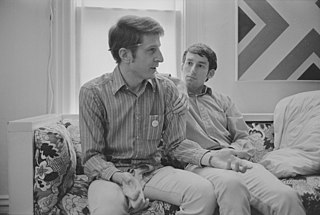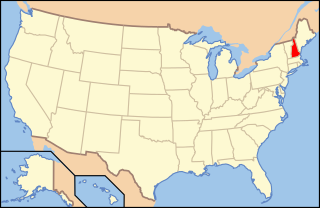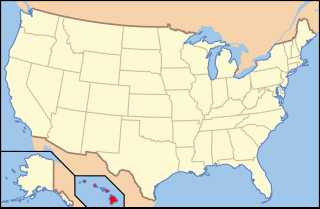
A civil union is a legally recognized arrangement similar to marriage, created primarily as a means to provide recognition in law for same-sex couples. Civil unions grant some or all of the rights of marriage.
The Federal Marriage Amendment (FMA), also referred to by proponents as the Marriage Protection Amendment, was a proposed amendment to the United States Constitution that would legally define marriage as a union of one man and one woman. The FMA would also prevent judicial extension of marriage rights to same-sex couples.
A domestic partnership is an intimate relationship between people, usually couples, who live together and share a common domestic life but who are not married. People in domestic partnerships receive legal benefits that guarantee right of survivorship, hospital visitation, and other rights.

The availability of legally recognized same-sex marriage in the United States expanded from one state (Massachusetts) in 2004 to all fifty states in 2015 through various court rulings, state legislation, and direct popular votes. States each have separate marriage laws, which must adhere to rulings by the Supreme Court of the United States that recognize marriage as a fundamental right guaranteed by both the Due Process Clause and the Equal Protection Clause of the Fourteenth Amendment to the United States Constitution, as first established in the 1967 landmark civil rights case of Loving v. Virginia.

Mary Carolyn "Jodi" Rell is an American former politician who served as the 87th governor of Connecticut from 2004 to 2011. Rell also served as the state's 105th lieutenant governor of Connecticut from 1995 to 2004 under Governor John G. Rowland, and became governor after Rowland resigned from office. As of 2024, Rell is the very last Republican and woman to officially serve as Governor of Connecticut to date.
This is a list of notable events in the history of LGBT rights that took place in the year 2005.
A California domestic partnership is a legal relationship, analogous to marriage, created in 1999 to extend the rights and benefits of marriage to same-sex couples. It was extended to all opposite-sex couples as of January 1, 2016 and by January 1, 2020 to include new votes that updated SB-30 with more benefits and rights to California couples choosing domestic partnership before their wedding. California Governor Newsom signed into law on July 30, 2019.
Same-sex marriage has been legal in Vermont since September 1, 2009. Vermont was the first U.S. state to introduce civil unions on July 1, 2000, and the first to introduce same-sex marriage by enacting a statute without being required to do so by a court decision. Vermont was the fourth state to legalize same-sex marriage after Massachusetts, Connecticut, and Iowa.
Same-sex marriage has been legally recognized in New Jersey since October 21, 2013, the effective date of a trial court ruling invalidating the state's restriction of marriage to persons of different sexes. In September 2013, Mary C. Jacobson, Assignment Judge of the Mercer Vicinage of the Superior Court, ruled that as a result of the U.S. Supreme Court's June 2013 decision in United States v. Windsor, the Constitution of New Jersey requires the state to recognize same-sex marriages. The Windsor decision held that the federal government was required to provide the same benefits to same-sex couples who were married under state law as to other married couples. Therefore, the state court reasoned in Garden State Equality v. Dow that, because same-sex couples in New Jersey were limited to civil unions, which are not recognized as marriages under federal law, the state must permit civil marriage for same-sex couples. This ruling, in turn, relied on the 2006 decision of the New Jersey Supreme Court in Lewis v. Harris that the state was constitutionally required to afford the rights and benefits of marriage to same-sex couples. The Supreme Court had ordered the New Jersey Legislature to correct the constitutional violation, by permitting either same-sex marriage or civil unions with all the rights and benefits of marriage, within 180 days. In response, the Legislature passed a bill to legalize civil unions on December 21, 2006, which became effective on February 19, 2007.
In response to court action in a number of states, the United States federal government and a number of state legislatures passed or attempted to pass legislation either prohibiting or allowing same-sex marriage or other types of same-sex unions.
Joan V. Hartley is an American politician. A Democrat, she has been a state senator from Connecticut since 2001.
Same-sex marriage has been legally recognized in Rhode Island since August 1, 2013. The state had authorized a limited form of domestic partnerships from 2002 to 2011 and the formation of civil unions from 2011 until the state began recognizing same-sex marriages in 2013. Rhode Island was the last U.S. state in New England to legalize same-sex marriage.
Michael P. Lawlor is an American politician, criminal justice professor, and lawyer from Connecticut. A Democrat, he served as a member of the Connecticut House of Representatives from 1987 to 2011, representing the 99th district in East Haven. Lawlor resigned from the legislature on January 4, 2011 to serve in Dan Malloy's administration as undersecretary for criminal justice policy and planning at the Office of Policy and Management.
State Registered Domestic Partnerships (SRDP) in Washington were created in 2007 following the Andersen v. King County decision. Subsequent legislation has made an SRDP the equivalent of marriage under state law. As a result of the legalization of same-sex marriage in the state, from June 30, 2014, SRDP will be available only when at least one of the partners is sixty-two years of age or older.
Same-sex marriage has been legal in New Hampshire since January 1, 2010, based on legislation signed into law by Governor John Lynch on June 3, 2009. The law provided that civil unions, which the state had established on January 1, 2008, would be converted to marriages on January 1, 2011, unless dissolved, annulled, or converted to marriage before that date.

Lesbian, gay, bisexual, and transgender (LGBT) people in the U.S. state of New Hampshire enjoy the same rights as non-LGBT people, with most advances in LGBT rights occurring in the state within the past two decades. Same-sex sexual activity is legal in New Hampshire, and the state began offering same-sex couples the option of forming a civil union on January 1, 2008. Civil unions offered most of the same protections as marriages with respect to state law, but not the federal benefits of marriage. Same-sex marriage in New Hampshire has been legally allowed since January 1, 2010, and one year later New Hampshire's civil unions expired, with all such unions converted to marriages. New Hampshire law has also protected against discrimination based on sexual orientation since 1998 and gender identity since 2018. Additionally, a conversion therapy ban on minors became effective in the state in January 2019. In effect since January 1, 2024, the archaic common-law "gay panic defence" was formally abolished; by legislation implemented within August 2023.
Kerrigan v. Commissioner of Public Health, 289 Conn. 135, 957 A.2d 407, is a 2008 decision by the Connecticut Supreme Court holding that allowing same-sex couples to form same-sex unions but not marriages violates the Connecticut Constitution. It was the third time that a ruling by the highest court of a U.S. state legalized same-sex marriage, following Massachusetts in Goodridge v. Department of Public Health (2003) and California in In re Marriage Cases (2008). The decision legalized same-sex marriage in Connecticut when it came into effect on November 12, 2008. There were no attempts made to amend the state constitution to overrule the decision, and gender-neutral marriage statutes were passed into law in 2009.

The establishment of lesbian, gay, bisexual, and transgender (LGBT) rights in the U.S. state of Connecticut is a recent phenomenon, with most advances in LGBT rights taking place in the late 20th century and early 21st century. Connecticut was the second U.S. state to enact two major pieces of pro-LGBT legislation; the repeal of the sodomy law in 1971 and the legalization of same-sex marriage in 2008. State law bans unfair discrimination on the basis of sexual orientation and gender identity in employment, housing and public accommodations, and both conversion therapy and the gay panic defense are outlawed in the state.

Lesbian, gay, bisexual, and transgender (LGBT) people in the U.S. state of Hawaii enjoy the same rights as non-LGBT people. Same-sex sexual activity has been legal since 1973; Hawaii being one of the first six states to legalize it. In 1993, a ruling by the Hawaiʻi Supreme Court made Hawaii the first state to consider legalizing same-sex marriage. Following the approval of the Hawaii Marriage Equality Act in November 2013, same-sex couples have been allowed to marry on the islands. Additionally, Hawaii law prohibits discrimination on the basis of both sexual orientation and gender identity, and the use of conversion therapy on minors has been banned since July 2018. Gay and lesbian couples enjoy the same rights, benefits and treatment as opposite-sex couples, including the right to marry and adopt.
Same-sex marriage has been legal in Virginia since October 6, 2014, following the decision of the U.S. Supreme Court not to hear an appeal of the Fourth Circuit Court of Appeals' ruling in Bostic v. Schaefer. Same-sex marriages subsequently began at 1:00 p.m. on October 6 after the Fourth Circuit issued its mandate, and since then Virginia has performed legal marriages of same-sex couples and recognized out-of-state same-sex marriages. Previously, the state had passed a statute prohibiting same-sex marriage in 1975, and further restrictions were added in 1997 and 2004, which made "void and unenforceable" any arrangements between same-sex couples bestowing the "privileges or obligations of marriage". Voters approved an amendment to the Constitution of Virginia reinforcing the existing laws in 2006. On January 14, 2014, a U.S. district court judge ruled in Bostic that Virginia's statutory and constitutional ban on the state recognition of same-sex marriages were unconstitutional, a decision upheld by the Fourth Circuit on July 28, 2014.





